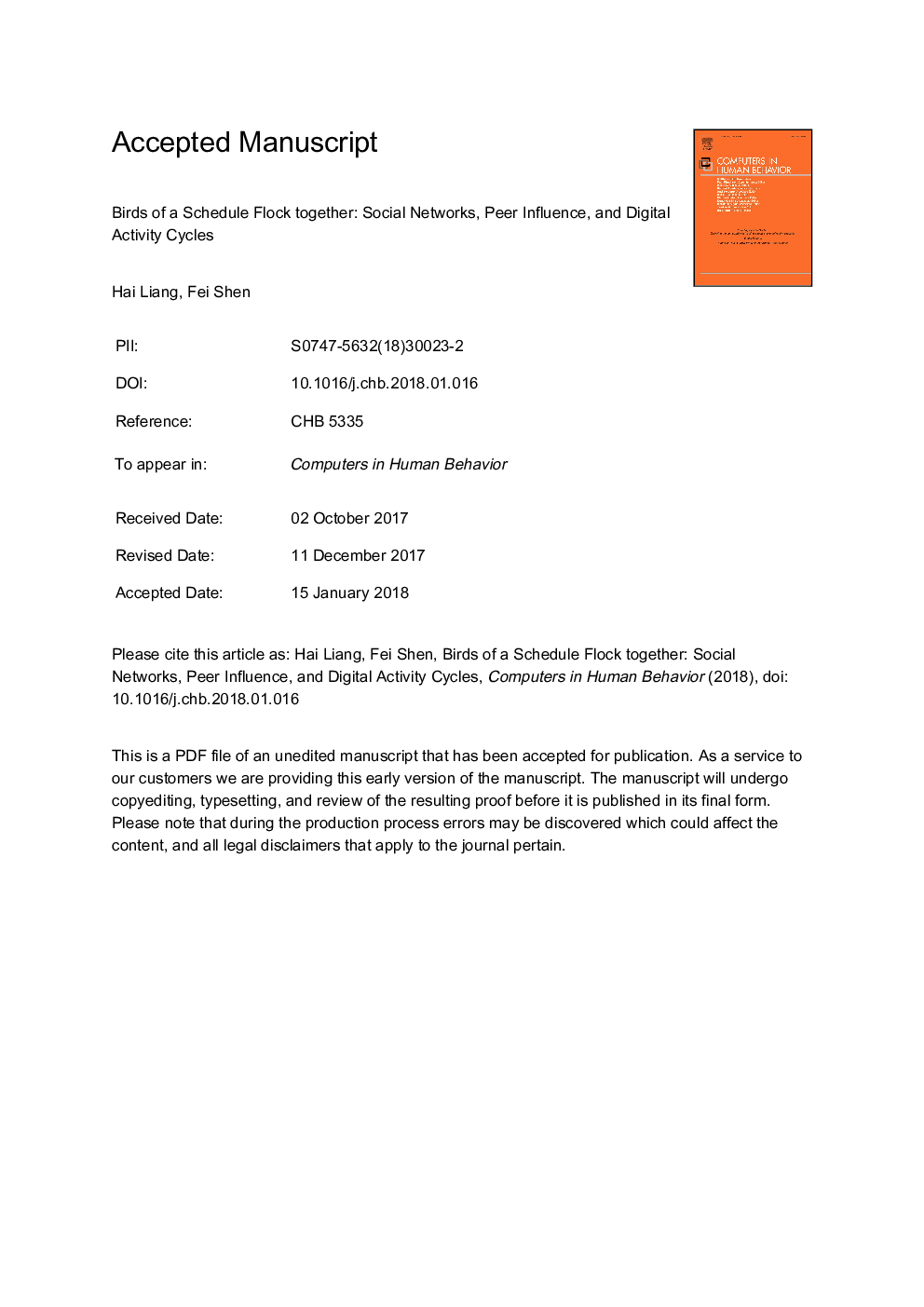| Article ID | Journal | Published Year | Pages | File Type |
|---|---|---|---|---|
| 6836164 | Computers in Human Behavior | 2018 | 38 Pages |
Abstract
The use of social media such as Twitter has changed our life routines. Previous studies have found consistent diurnal patterns of user activities on social media platforms. However, the temporal organization of human behavior is partly socially constructed and is determined by numerous factors other than the diurnal cycle. The current study argues that peer influence incurred by social networks is one of these potential factors. To test our hypotheses, we collected a random sample of active Twitter users (Nâ¯=â¯5066), their followers and followees (Nâ¯=â¯424,984), and all available tweets posted by these users. Results suggest that the temporal patterns between self-posting and interaction behavior differ across individuals. Users' daily activity rhythms are more similar to their followees' rhythms than to their followers' rhythms. Despite the fact that the self-selection mechanism (homophily) cannot be ignored, peer influence seems to be an equally likely mechanism explaining such similarity.
Related Topics
Physical Sciences and Engineering
Computer Science
Computer Science Applications
Authors
Hai Liang, Fei Shen,
